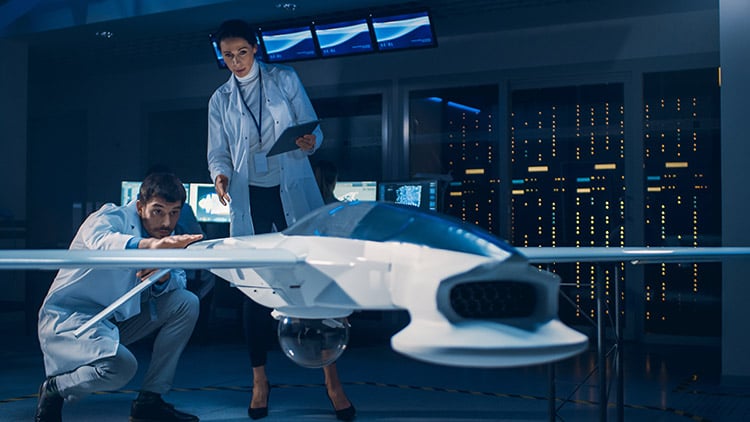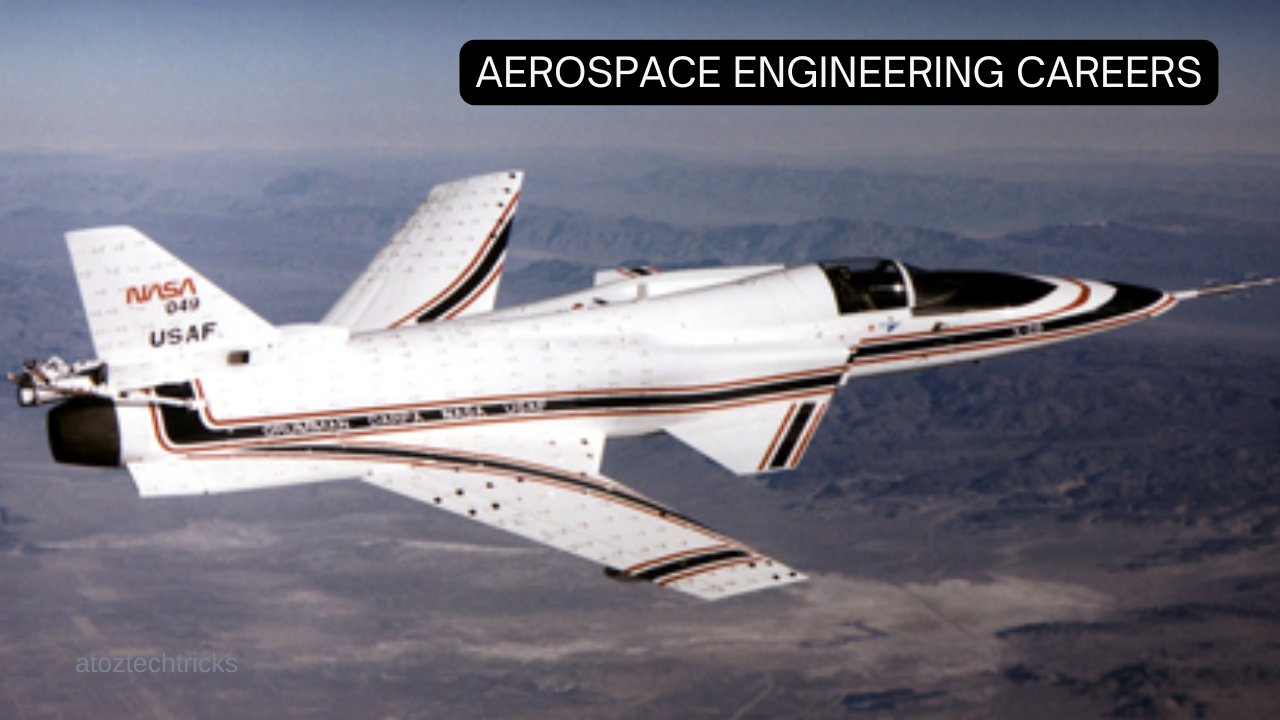Aerospace Engineering Careers: A Comprehensive Guide
Aerospace engineering is a dynamic and multidisciplinary field that focuses on the design, development, and maintenance of aircraft and spacecraft. It is a career path that blends principles of mechanical, electrical, and materials engineering to push the boundaries of technology and exploration. As technology advances and global interests shift, aerospace engineers are increasingly in demand to tackle new challenges and innovate solutions. This guide provides an in-depth look into aerospace engineering careers, including educational pathways, career opportunities, skills required, and future trends.
1. Understanding Aerospace Engineering
1.1 Definition and Scope
Aerospace engineering is the branch of engineering concerned with the development of aircraft and spacecraft. This field encompasses two primary sub-disciplines:
- Aeronautical Engineering: Focuses on aircraft that operate within Earth’s atmosphere.
- Astronautical Engineering: Deals with spacecraft and systems that function outside Earth’s atmosphere.
Aerospace engineers apply principles from various engineering fields, including fluid dynamics, structural analysis, propulsion, and avionics. Their work involves designing new technologies, improving existing systems, and solving complex technical problems.
1.2 Historical Context
The origins of aerospace engineering can be traced back to the early 20th century with the advent of powered flight. The Wright brothers’ first successful flight in 1903 marked the beginning of modern aerospace engineering. Over the decades, advancements in materials science, computer technology, and propulsion systems have dramatically transformed the field, leading to breakthroughs such as the Apollo Moon landings and the development of commercial spaceflight.
2. Educational Pathways
2.1 Bachelor’s Degree
A career in aerospace engineering typically begins with a bachelor’s degree in aerospace engineering, mechanical engineering, or a related field. Core subjects include:
- Fundamentals of Aerospace Engineering: Principles of flight, aerodynamics, and propulsion.
- Mathematics and Physics: Advanced calculus, differential equations, and classical mechanics.
- Materials Science: Study of materials used in aerospace applications, including composites and metals.
- Control Systems: Designing and analyzing systems that regulate the behaviour of aircraft and spacecraft.
2.2 Advanced Degrees
Many aerospace engineers pursue advanced degrees to specialize further or to enter research and academia. A master’s degree or Ph.D. in aerospace engineering can provide expertise in areas such as:
- Propulsion Systems: Advanced study of jet engines, rockets, and alternative propulsion methods.
- Space Systems: Research on spacecraft design, orbital mechanics, and satellite technology.
- Aerodynamics: In-depth analysis of airflow and its effects on aircraft and spacecraft.
2.3 Professional Certifications
In some regions, aerospace engineers may obtain professional certifications to enhance their credentials. For example, in the United States, the Professional Engineer (PE) license is highly regarded and often required for certain positions. Certification demonstrates a high level of expertise and commitment to the profession.

3. Career Opportunities
3.1 Aerospace Industry Sectors
The aerospace industry encompasses various sectors, each offering distinct career opportunities:
- Commercial Aviation: Involves designing and maintaining aircraft for passenger and cargo transport. Careers include aircraft design engineers, systems engineers, and maintenance engineers.
- Military Aerospace: Focuses on the development of military aircraft, missiles, and defence systems. Positions include defence systems engineers, avionics engineers, and flight test engineers.
- Space Exploration: Involves working on spacecraft, satellites, and space missions. Careers include spacecraft design engineers, mission planners, and propulsion engineers.
- Research and Development: Centers on advancing aerospace technology through research and innovation. Positions include research scientists, laboratory engineers, and systems analysts.
3.2 Typical Job Roles
Aerospace engineers can pursue various roles within these sectors, including:
- Design Engineer: Develops new aircraft and spacecraft designs, including structural components and systems integration.
- Systems Engineer: Focuses on ensuring that all subsystems work together effectively within the overall system.
- Propulsion Engineer: Specializes in the development and testing of engines and propulsion systems.
- Avionics Engineer: Designs and maintains electronic systems used in aircraft and spacecraft, including navigation and communication systems.
- Flight Test Engineer: Conducts tests to evaluate the performance and safety of new aircraft and spacecraft designs.
3.3 Work Environment
Aerospace engineers may work in various environments, including:
- Office Settings: Designing and analyzing systems using computer-aided design (CAD) software and simulation tools.
- Laboratories: Conducting experiments and tests on prototypes and components.
- Manufacturing Facilities: Overseeing the production and assembly of aerospace systems.
- Field Sites: Testing and evaluating aerospace systems in real-world conditions, such as flight test programs.
Law Enforcement Careers: Opportunities, Challenges, and Pathways
4. Essential Skills and Competencies
4.1 Technical Skills
Aerospace engineers require a strong foundation in technical skills, including:
- Mathematics and Physics: Advanced knowledge of mathematical and physical principles is crucial for solving complex engineering problems.
- Computer-Aided Design (CAD): Proficiency in CAD software for designing and modelling aerospace systems.
- Simulation and Testing: Experience with simulation tools and testing methods to evaluate system performance.
4.2 Soft Skills
In addition to technical expertise, aerospace engineers must possess essential soft skills:
- Problem-Solving: Ability to identify and address engineering challenges through innovative solutions.
- Teamwork: Collaboration with multidisciplinary teams to achieve project goals.
- Communication: Effective communication skills for presenting ideas, writing reports, and interacting with stakeholders.
- Attention to Detail: Precision in designing and analyzing systems to ensure safety and functionality.
5. Challenges and Opportunities
5.1 Current Challenges
The aerospace industry faces several challenges, including:
- Sustainability: Developing environmentally friendly technologies and reducing the carbon footprint of aircraft and spacecraft.
- Cost Management: Managing the high costs associated with aerospace projects, including research, development, and manufacturing.
- Regulatory Compliance: Adhering to strict regulations and safety standards in the design and operation of aerospace systems.
5.2 Future Opportunities
Despite these challenges, the aerospace industry offers numerous opportunities:
- Advancements in Technology: Innovations such as electric and hybrid propulsion systems, autonomous vehicles, and advanced materials.
- Space Exploration: Expanding opportunities in commercial spaceflight, planetary exploration, and satellite technology.
- Globalization: Increasing demand for aerospace engineers worldwide, driven by the growth of international markets and collaborations.
![Aerospace Engineer Job Description: Role & Responsibilities [2024] - foundit](https://media.foundit.in/career-advice/wp-content/uploads/2023/09/795-x-285-17-min.jpg)
6. Career Development and Growth
6.1 Professional Development
Aerospace engineers can advance their careers through various professional development opportunities:
- Continuing Education: Pursuing additional coursework or certifications to stay current with industry trends and technological advancements.
- Networking: Joining professional organizations, such as the American Institute of Aeronautics and Astronautics (AIAA), to connect with peers and industry leaders.
- Mentorship: Seeking guidance from experienced professionals to gain insights and advice on career progression.
6.2 Career Advancement
Career advancement in aerospace engineering may involve:
- Specialization: Developing expertise in a specific area, such as propulsion or avionics, to become a subject matter expert.
- Management Roles: Transitioning into leadership positions, such as project manager or department head, to oversee teams and projects.
- Entrepreneurship: Starting a business or consultancy to offer specialized aerospace engineering services or products.
7. The Future of Aerospace Engineering
7.1 Emerging Trends
The future of aerospace engineering is shaped by several emerging trends:
- Autonomous Systems: The development of unmanned aerial vehicles (UAVs) and autonomous spacecraft for various applications, including surveillance and delivery.
- Space Tourism: The growth of commercial space travel and the potential for space tourism as a new industry.
- Advanced Propulsion: Innovations in propulsion technologies, such as ion thrusters and nuclear propulsion, for deeper space exploration.
7.2 Impact of Emerging Technologies
Emerging technologies are expected to have a significant impact on aerospace engineering, including:
- Artificial Intelligence (AI): Enhancing system design, analysis, and decision-making through AI and machine learning algorithms.
- Internet of Things (IoT): Integrating IoT technologies into aerospace systems for improved monitoring and maintenance.
- Blockchain: Implementing blockchain for secure and transparent data management in aerospace operations.
Aerospace engineering is a dynamic and rewarding field that offers diverse career opportunities and the chance to contribute to groundbreaking advancements in technology and exploration. With a strong educational foundation, essential skills, and a commitment to continuous learning, aerospace engineers can thrive in this exciting industry. As technology evolves and new challenges emerge, aerospace engineers will play a crucial role in shaping the future of aviation and space exploration.
Whether you are drawn to designing cutting-edge aircraft, exploring the depths of space, or contributing to critical research and development, a career in aerospace engineering promises a fulfilling and impactful journey.





Post Comment